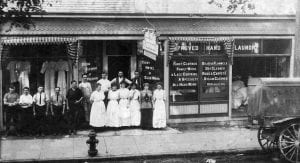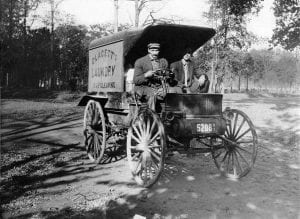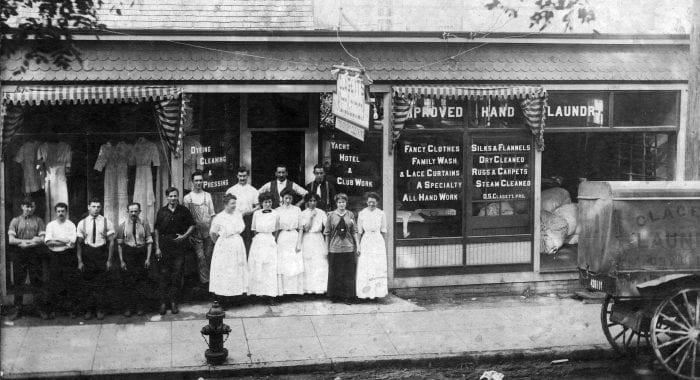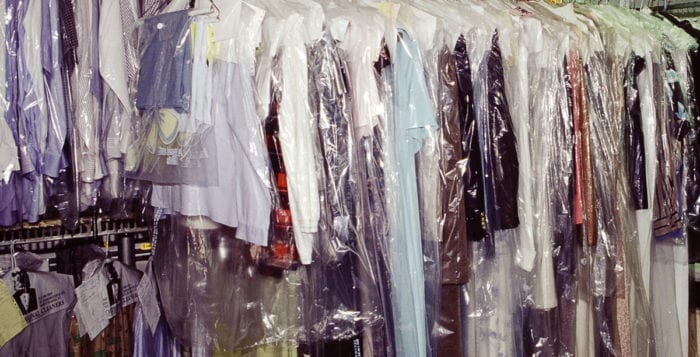By Kenneth Brady
Once again, it was time for Mrs. George D. Lee of Port Jefferson to do the wash, an onerous household task that just would not go away.
According to a diary that chronicles life in her family from 1866 through 1886, Lee usually devoted the equivalent of a full day of labor per week to cleaning her clothes, as well as those of her husband, children and elderly father.
Laundering was a multistep process that typically involved making soap from tallow and lye or using a commercial product, chopping and carrying wood for the fire, and hauling and heating buckets of water. Using a washboard and tub, the dirt was scrubbed from the clothes, which were then rinsed with pails of fresh water, squeezed of liquid, hung outside to dry, starched, and ironed.

She generally managed the wash herself, but at times paid laundresses to deal with the hard, heavy and hot work. Some of the washerwomen toiled right in Lee’s home while others took the laundry to their respective houses.
Competing with Port Jefferson’s washerwomen, so-called Chinese laundries first appeared in the village during the late 19th century.
Running a laundry demanded long hours and backbreaking manual labor, but it was an “option” for Chinese immigrants who faced discrimination, were short on capital, had limited English, and were kept out of most desirable careers.
Sanborn maps of Port Jefferson from 1891 through 1917, show Chinese laundries at various locations on today’s Main and East Main streets, while advertisements for some of these establishments appear in local newspapers and business directories.
Laundering became industrialized in Port Jefferson during the early twentieth century with the advent of the steam laundry.
In contrast to a Chinese laundry where the work was done by hand, a commercial steam laundry used a steam engine to drive its specialized machinery, enabling a plant to handle a large volume of business and to do so quickly and efficiently.
In 1907, Owen S. Clagett of Central Islip opened a steam laundry in the basement of Athena Hall (Theatre Three) on the west side of Port Jefferson’s Main Street, naming his company the Improved Hand Laundry.
The following year, as his business flourished, Clagett moved the laundry’s operations to larger quarters on what is now the village’s East Main Street.
Clagett served individuals, families and hotels in Port Jefferson and the environs, running a pickup and delivery route as far west as Old Field and east as Shoreham.

In a 1911 advertisement in the Port Jefferson Echo, Clagett urged readers to “Come, be an American!” and patronize his establishment, an apparent racist swipe at the proprietors of the village’s Chinese laundries who earlier had been harassed by a number of Port Jefferson’s “young rowdies.”
Clagett moved to Kentucky in 1917 and closed shop in the village, providing an opportunity for an experienced Port Jefferson laundryman to fill the void.
Alphonse Raynaud, who had worked briefly as the foreman at Clagett’s Athena Hall location, opened the Port Jefferson French Hand Laundry in 1909 within what is today’s Traders Cove Parking Lot on the south side of Arden Place.
A French laundry was perceived as offering services far superior to those of a Chinese laundry, such as its attention to lace, but the term “French laundry” was also racist code among some for a white-run operation.
Enjoying considerable success, Raynaud moved his business to within what is now the village’s Resident Parking Lot on the north side of Arden Place. There he established the Port Jefferson French Steam Laundry. The plant was later enlarged and modernized after Raynaud partnered with Walter Sword.
In the ensuing years, the company changed owners several times and had different names, dissolving in 1949 as the Community Steam Laundry of Port Jefferson, Inc. The former laundry building was later used by the Athens Wire Company and destroyed by fire on Oct. 20, 1953.
Many factors contributed to the decline of steam laundries, but foremost was the popularity of electric washing machines which ironically put laundry work back into the home where the village’s Mrs. Lee had faced the loathsome chore in 1866.
Kenneth Brady has served as the Port Jefferson Village Historian and president of the Port Jefferson Conservancy, as well as on the boards of the Suffolk County Historical Society, Greater Port Jefferson Arts Council and Port Jefferson Historical Society. He is a longtime resident of Port Jefferson.






